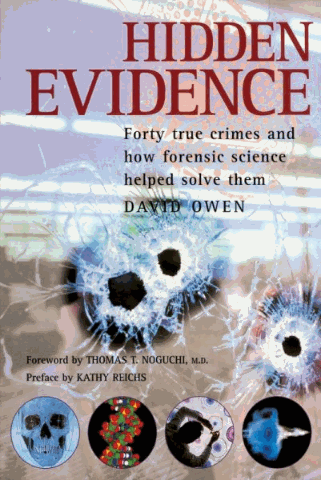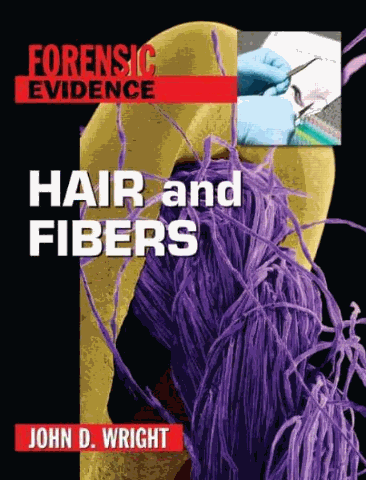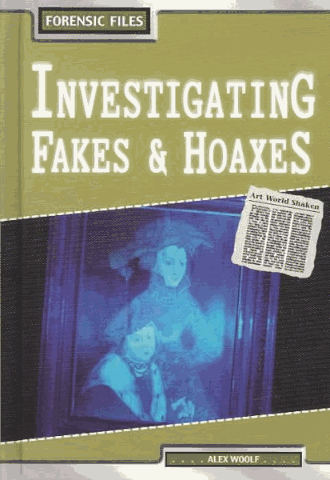Bone Detectives
Simple text and photographs describe how forensic scientist use bones to determine the age, gender, race, and cause of death of a person.
363.2
year: 2008
copies: 3
call number/section: 363.2
lexile: 630
Hidden Evidence
Profiles forty true crime cases and explains how their investigations were aided by the use of forensic science.
363.25
year: 2000
copies: 27
call number/section: 363.25
lexile: 1390
Forensic Science
Examines forensic science and how it can be used to apprehend criminals by finding clues in rug fibers, the way a bone is broken, DNA "fingerprints," and more.
363.25
year: 1999
copies: 10
call number/section: 363.25
lexile:
Forensics
Presents an introduction to forensic science, explaining what it is, providing information on how it helps law enforcement solve difficult crimes, in the field and in the lab.
363.25
year: 2008
copies: 16
call number/section: 363.25
lexile: 1100
Forensic Science
Describes several types of evidence that forensic scientists study in the investigation of crimes, including fingerprints, blood splatters, toxicology, hair strands, pieces of glass, and others; examines accident reconstruction; and discusses the impact technological advances in DNA and other areas have had on crime fighting.
363.25
year: 2006
copies: 3
call number/section: 363.25
lexile:
The Dna Gave It Away!
Examines how the technology of DNA is able to help law enforcement in the solving of different crimes.
363.25
year: 2008
copies: 8
call number/section: 363.25
lexile: 770
Hair And Fibers
Examines how forensic scientists gather and use hair and fiber evidence to investigate crimes and presents related case studies as well as key facts.
363.25
year: 2008
copies: 1
call number/section: 363.25
lexile:
Opportunities In Forensic Science Careers
Provides an overview of the field of forensic science, with descriptions of the various settings in which forensic scientists work; features first-hand accounts from people working in the profession; and includes lists of related professional associations and training programs.
363.25
year: 2009
copies: 4
call number/section: 363.25
lexile:
Blood Evidence
Describes how blood analysis is used to solve crimes, including the tests performed by lab technicians on samples to determine blood type and other characteristics, and finding, saving and interpreting blood evidence.
363.25
year: 2004
copies: 15
call number/section: 363.25
lexile: 810
Investigating Fakes & Hoaxes
Offers a brief history of forensic science and describes instances in which its techniques have been used to investigate various crimes, including murder, identity theft, and art forgery.
363.25
year: 2004
copies: 2
call number/section: 363.25
lexile:
Investigating Murder Mysteries
Discusses some famous murder cases and how forensic science techniques were used to solve them.
363.25
year: 2004
copies: 4
call number/section: 363.25
lexile:
Investigating Thefts & Heists
Discusses some famous robbery cases and describes how these cases were solved using forensic science.
363.25
year: 2004
copies: 1
call number/section: 363.25
lexile:
Forensic Science
An introduction to forensic science that examines real-life criminal cases and the technologies used to solve them.
363.25
year: 2007
copies: 6
call number/section: 363.25
lexile:
Forensic Evidence
Discusses how crime scene investigators collect, use, and analyze hairs and fibers using microscopes, DNA databases, and police profiles, and includes a glossary.
363.25
year: 2008
copies: 4
call number/section: 363.25
lexile: 720
Forensic Evidence
Discusses the work of crime scene investigators, including the unique features of fingerprints and how they are obtained, and covers shoeprints, tire marks, lip prints, and how evidence is analyzed in the lab, and contains a glossary.
363.25
year: 2008
copies: 9
call number/section: 363.25
lexile: 620














